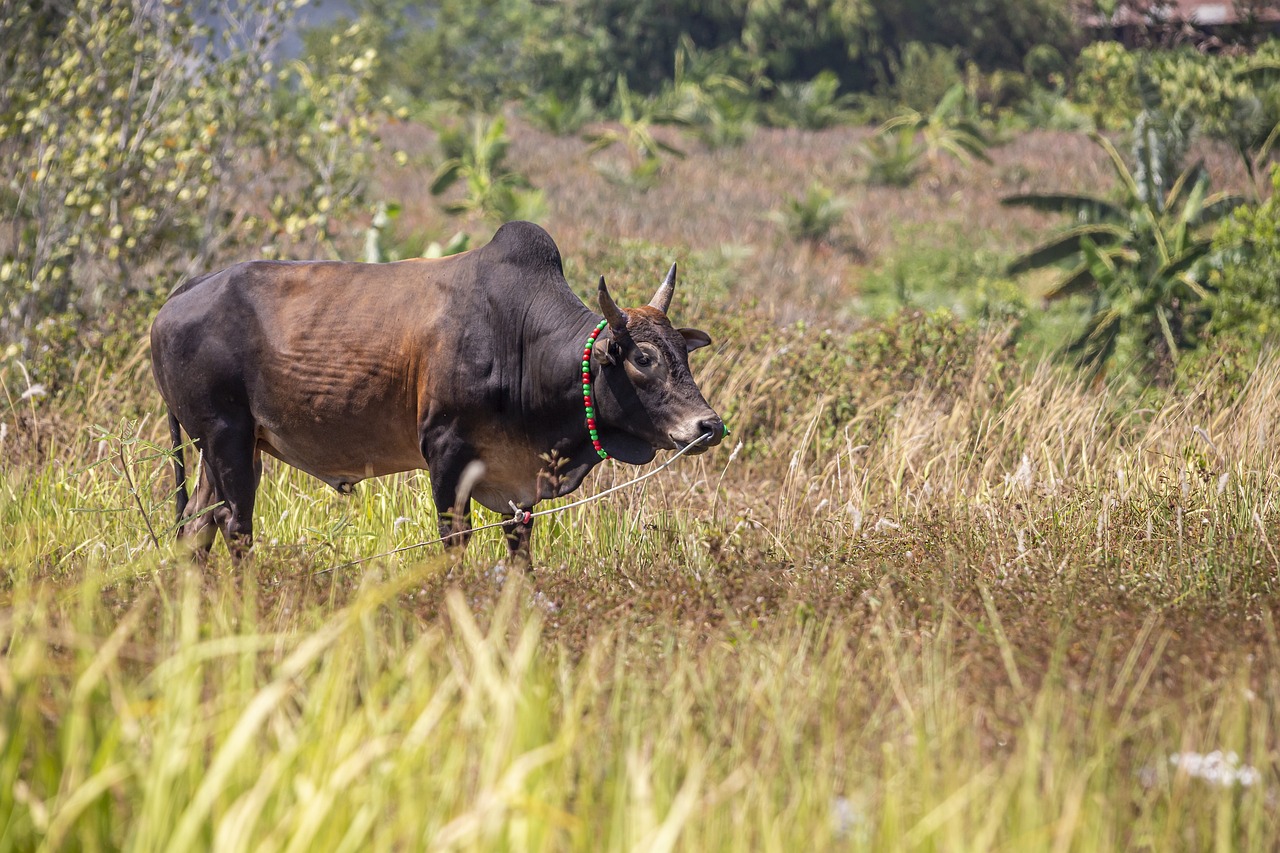In Thailand, the term “bull” can refer to several types of large bovine animals, depending on the context. Here are a few notable types:
1. Thai Fighting Bull
- Cultural Significance: Thailand has a long tradition of bullfighting, particularly in the southern provinces such as Phatthalung and Songkhla. Thai fighting bulls are a specific breed known for their strength and stamina. The fights are less violent than those in other countries, as they usually end when one bull turns away.
- Physical Characteristics: These bulls are often medium-sized with a muscular build. They are selected and trained specifically for bullfighting and are typically cared for very well by their owners.
2. Water Buffalo (Bubalus bubalis)
- Role in Agriculture: The water buffalo, or “kwai” in Thai, is a common sight in the rural areas of Thailand. These animals have been essential for centuries in rice farming, especially in the central and northern parts of the country, where they are used for plowing fields and other farm labor.
- Physical Characteristics: They are large, with a dark gray to black coat and wide, curved horns. Water buffalo are well-adapted to the hot, humid climate and wet environments of Thailand.
- Cultural Significance: Beyond their agricultural role, water buffaloes are also part of festivals and traditions, such as the annual Buffalo Racing Festival in Chonburi province, which attracts spectators from all over Thailand.
3. Gaur (Bos gaurus)
- Wild Species: The gaur, known as “krating” in Thai, is a wild bovine species native to Thailand. It is one of the largest and most powerful of all wild cattle species.
- Habitat: Gaurs are typically found in the forests and grasslands of Thailand’s national parks and wildlife reserves, such as Khao Yai National Park and Huai Kha Khaeng Wildlife Sanctuary.
- Physical Characteristics: Gaurs are characterized by their massive size, with males standing up to 2 meters at the shoulder and weighing over 1,000 kilograms. They have a dark brown to black coat, with a distinctive white “stocking” pattern on their lower legs and a prominent ridge on their back.
- Conservation Status: Gaurs are classified as vulnerable due to habitat loss, poaching, and disease transmission from domestic cattle. Conservation efforts in Thailand include habitat protection and anti-poaching initiatives.
4. Banteng (Bos javanicus)
- Endangered Species: The banteng is another wild cattle species found in Thailand, primarily in protected areas. It is smaller and lighter than the gaur but still significant in size.
- Physical Characteristics: Bantengs have a reddish-brown coat, with a white rump patch, white stockings, and a characteristic hump at the shoulder. Males are usually darker in color than females.
- Habitat and Conservation: Like the gaur, bantengs are also vulnerable to extinction due to habitat destruction, hunting, and hybridization with domestic cattle. Conservation measures are in place to protect their habitats and reduce hunting pressures.
5. Domestic Cattle (Bos taurus)
- Farming Role: In addition to water buffalo, domestic cattle are raised in Thailand for dairy and meat production. These cattle are usually smaller and less muscular than the fighting bulls but are an important part of Thailand’s agricultural economy.
Cultural and Economic Importance
In Thai culture, bulls and cattle are important symbols of strength, resilience, and hard work. They are celebrated in festivals, used in traditional farming, and are key contributors to rural livelihoods.
Would you like more details on any specific type of bull or related activities in Thailand?
Visited 873 times, 4 visit(s) today
Views: 1311
Subscribe to the newsletter:
